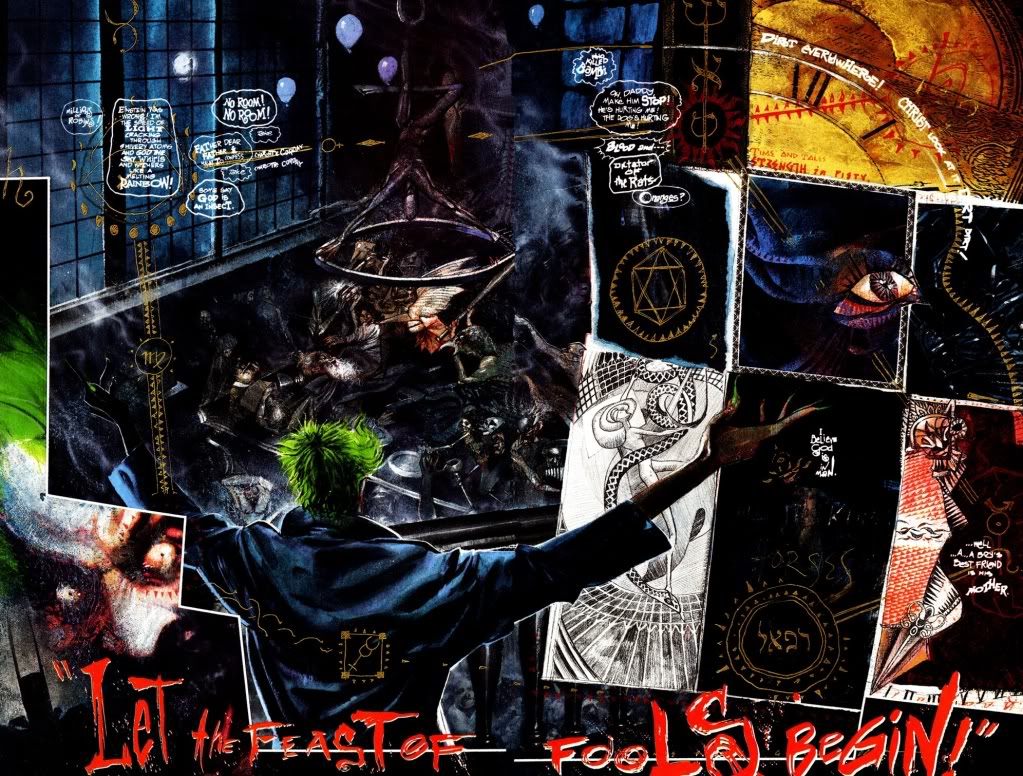Screaming Meat
Unconfirmed Member
I want to wax-bullshit about Mister Miracle #1 for a bit. If you havent read it, I strongly recommend you do.
There will be unmarked spoilers for that issue.
We good?
Cool.
So for context, a summary of Miracle Man from Amazon is as good as any:
...and the comic opens with him like this:
...and we follow him through the aftermath of his suicide attempt. Or maybe the lead up. You dont really know.
Fuck me is it good. Real good. Hence the avatar.
I mostly want to talk about this though:

The comic reflects Scotts post/pre-suicide trauma in a number of ways: Panel breaks between Scott and other characters; art shifts that reflect his mood; the disjointed chronology; multiple panels making whole page compositions. Theres a genuine attempt at depicting trauma (depression, PTSD) and its expressed by using all the tricks a comic book has.
Then there is the genius of

Sure, they used similar panels in Sheriff of Babylon, but
?
Simple bold text against a black background instantly separates it from everything else on the page. Its even separate from caption boxes by size, a more tactile font, and the inversion/perversion of their typical colour scheme (black writing, white background).
An image wouldnt have the same effect. I heard a guy on Action Figure Comics say he would rather Darkseids face was slowly revealed. Not only would that be hackneyed as all fuck, it would end up just another image on the page.
The text INVADES the comic; it supplants the primary mode of communication in comics: the hallowed image. The Darkseid is is stark, stamped across the book almost (almost) at random. The contrast helps. Its like the words are a brand searing themselves on our minds eye.
When you first turn a page, you scan around a little, right? Even accidentally. Its a dirty secret, but it happens. But there is a dead void on most pages. Even in your periphery, you notice them. As you read further, it eats up more and more panels till it outnumbers the art. Because we read comics the way we do, we cant resist it; we cant escape the inevitability of it. Were tied to the tracks of the page and it bears down on us like a goddamned doom train.

At Scotts quiet moments or moments of trauma or stress, when he feels the bleak flash of his stomach falling through and the darkness pushing down on him, and that feeling fills his whole world... were right in that pit alongside him, right in the void where

...which has to be the most effective use of a comic book to portray depression that Ive seen.
What Id love to know is, are there many comics out there that have similarly used the form to reflect a characters emotional state or perspective? I mean, beyond sepia tones to represent the past?
Another example:
I think Dr Manhattans perspective is effectively portrayed in Watchmen. Like, if you take in a whole page (or even a double page spread) of Chapter Watchmaker, you get a sense of his perspective. Our experience of time is reading through panels individually from left to right. His is seeing all the pages and panels at once:
His knowledge of future events comes from the fact that he views time at all points at the same time. Past, present and future is all one and the same to him, and thats beautifully represented using a simple series of panels. The natural state of a comic book gives us the perspective of a God
So yeah, itd be amazing to get pointed to any other comics that use the form to reflect a characters emotional state/perspective. Have at it GAF!
There will be unmarked spoilers for that issue.
We good?
Cool.
So for context, a summary of Miracle Man from Amazon is as good as any:
Amazon said:Scott Free is the greatest escape artist that ever lived. So great that he escaped Granny Goodness' gruesome orphanage and the dangers of Apokolips to travel across galaxies and set up a new life on Earth with his wife, the former female fury known as Big Barda. Using the stage alter ego of Mister Miracle, he has made a career for himself showing off his acrobatic escape techniques. He even caught the attention of the Justice League, which counted him among its ranks. You might say Scott Free has everything...so why isn't it enough? Mister Miracle has mastered every illusion, achieved every stunt, pulled off every trick - except one. He has never escaped death. Is it even possible? Our hero is going to have to kill himself if he wants to find out.
...and the comic opens with him like this:
...and we follow him through the aftermath of his suicide attempt. Or maybe the lead up. You dont really know.
Fuck me is it good. Real good. Hence the avatar.
I mostly want to talk about this though:

The comic reflects Scotts post/pre-suicide trauma in a number of ways: Panel breaks between Scott and other characters; art shifts that reflect his mood; the disjointed chronology; multiple panels making whole page compositions. Theres a genuine attempt at depicting trauma (depression, PTSD) and its expressed by using all the tricks a comic book has.
Then there is the genius of

Sure, they used similar panels in Sheriff of Babylon, but
I havent read that so shut your face, yeah
Simple bold text against a black background instantly separates it from everything else on the page. Its even separate from caption boxes by size, a more tactile font, and the inversion/perversion of their typical colour scheme (black writing, white background).
An image wouldnt have the same effect. I heard a guy on Action Figure Comics say he would rather Darkseids face was slowly revealed. Not only would that be hackneyed as all fuck, it would end up just another image on the page.
The text INVADES the comic; it supplants the primary mode of communication in comics: the hallowed image. The Darkseid is is stark, stamped across the book almost (almost) at random. The contrast helps. Its like the words are a brand searing themselves on our minds eye.
When you first turn a page, you scan around a little, right? Even accidentally. Its a dirty secret, but it happens. But there is a dead void on most pages. Even in your periphery, you notice them. As you read further, it eats up more and more panels till it outnumbers the art. Because we read comics the way we do, we cant resist it; we cant escape the inevitability of it. Were tied to the tracks of the page and it bears down on us like a goddamned doom train.

At Scotts quiet moments or moments of trauma or stress, when he feels the bleak flash of his stomach falling through and the darkness pushing down on him, and that feeling fills his whole world... were right in that pit alongside him, right in the void where

...which has to be the most effective use of a comic book to portray depression that Ive seen.
What Id love to know is, are there many comics out there that have similarly used the form to reflect a characters emotional state or perspective? I mean, beyond sepia tones to represent the past?
Another example:
I think Dr Manhattans perspective is effectively portrayed in Watchmen. Like, if you take in a whole page (or even a double page spread) of Chapter Watchmaker, you get a sense of his perspective. Our experience of time is reading through panels individually from left to right. His is seeing all the pages and panels at once:
His knowledge of future events comes from the fact that he views time at all points at the same time. Past, present and future is all one and the same to him, and thats beautifully represented using a simple series of panels. The natural state of a comic book gives us the perspective of a God
So yeah, itd be amazing to get pointed to any other comics that use the form to reflect a characters emotional state/perspective. Have at it GAF!










